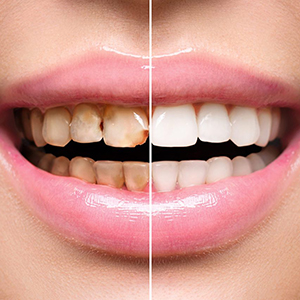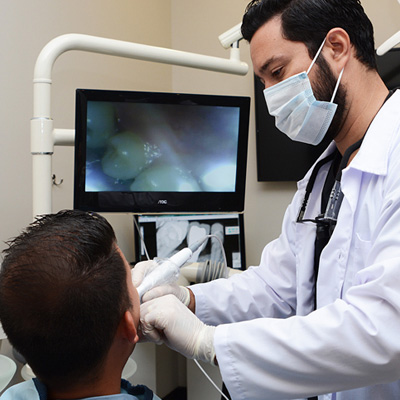Dental veneers appeared in 1930 when a renowned dentist from California, United States, known as Charles Pincus, devised the first veneers in order to improve the aesthetic appearance in the smiles of Hollywood actors and actresses.
These artists had tried any type of treatment but never had the desired smile. When the success came with this treatment it was said that the movie stars had a perfect smile, and also to much glamour.
The funny thing is the way this ingenious idea invaded many countries of the world that with the advent of technology were implementing other strategies to make this one of the best in the world, as is the case in Costa Rica.
Dental veneers in Costa Rica are highly demanded not only by artists and / or actresses but by the common citizen who wishes to eliminate those imperfections in their teeth.
In this article you will find everything related to dental veneers, specifically in Costa Rica, so let's study in-depth what this topic is about.
What are Dental Veneers?
Dental veneers are thin pieces made of porcelain that simulates the same color of the tooth, these stick to the surfaces in front of natural teeth as a way to face a series of physical and aesthetic problems.
This restorative dental process has the strength to mask the visible dental surface of the tooth, so it can correct aesthetic problems due to some pathology caused by tooth decay, restorations, fractures, among others.
Visually, dental veneers can be appreciated as super thin sheets that, as we have already mentioned, are generally made of porcelain.

Types of Dental Veneers
Since we are discussing about dental veneers we must know the types:
These were the first that came out with the implementation of this treatment. Its name is because they are made of feldspar, quartz and kaolin.
They are manufactured in a custom laboratory, applying porcelain layers of various types of densities and colors.
They are unique in their material, because the feldspar breaks down into glass and is what guarantees the translucency similar to that of a common tooth.
For their elaboration, after having gone through the process named above, they are introduced in a high temperature oven.
With this technique, a material known as lithium disilicate is used, and then using a model of the patient's tooth, the design in wax is made and then processed to make the injection of the ceramic in the oven.
This is raised as an alternative to porcelain veneer, also known as composite or resin laminates which are made by hand.
The materials used with the composite resin are used for aesthetic restorations with the purpose of simulating that the teeth look as natural as possible, for this several shades come.
Its use is linked to correct minimal imperfections in dental pieces, among those imperfects include: holes, splintered teeth, stains, separations and many more. Unfortunately, these may stain over time and are more brittle than porcelain.
Advantages and disadvantages of veneers
Like any treatment it has certain advantages and disadvantages that we want to tell you so that you are aware when you want to apply dental veneers Costa Rica.
Advantages:
With dental veneers you can stop worrying about drinking coffee for years, smoking cigarettes disproportionately or eating foods with high pigmentation that among so many things do an impressive damage to people's teeth.
Do you notice your teeth yellow and pale, lifeless? Those are the effects of having bad dental teeth, but that has a solution.
If you are from Costa Rica or an international patient, there are numerous clinics that offer the treatment of dental veneers, which is a totally radical way to whiten the smile and correct any vicissitude in it.
According to health studies, specifically in the dental area, veneers block stains, so you can stop worrying about discoloration or “because they are going to turn yellow, not anything like that, this treatment leaves that problem behind.
When the person has teeth that are a little crooked, they can be corrected with braces or other orthodontic treatments, but if you are looking for another option, the veneers can also be really useful in this case.
The explanation is very simple, they adhere to the surfaces in front of the teeth and although they are not able to change or correct their position, they hide these minimal problems of orthodontics.
Although the natural teeth still have that little twist, with the veneers they will be camouflaged and of this only you and your dentist would be aware so if you have this little problem, test with this option, as long as you consult it with your dentist of course.
That’s not all! Veneers even if they are not authorized to replace an orthodontic treatment, they can deflate the gum and this would make it easier for your attending physician to refer you to a specialized orthodontist.
There are many myths about enamel, the most common is "that it does not fall, it is indestructible", which is not the case, excessive brushing can wear it out as well as eating food with an uncontrollable acid can damage it.
To this we add the stomach acid that all human beings have and that with gastroesophageal reflux can cause irreparable damage to the enamel, however, this also has a solution.
It is possible to replace and strengthen it with dental veneers, as these are an effective treatment for those who have been victims of the harmful effects mentioned above.
Disadvantages:
Many people have expressed feeling high sensitivity in their teeth for a couple of weeks after having applied this treatment.
A report by the American Academy of Cosmetic Dentistry reveals that people after applying dental veneers are sensitive to high temperatures (hot or cold), this happens in the first days of having applied such treatment but then decreases until it disappears.
This treatment is irreversible, therefore, it is considered permanent after the dentist intervenes in the structure of your natural denture to repair it and put it in its proper place.
In this sense, the outer layer of the enamel must be removed forever and thus give space to the veneer, we say forever because after proceeding with this treatment there is no turning back, it is completely irreversible.
What is the cost of veneers in Costa Rica?
As we mentioned in past lines, the Costa Rica dental veneers price varies.
The cost of veneers in Costa Rica starts from $500 USD dollars, according to the latest prices established by the College of Dental Surgeons of Costa Rica.
The Costa Rica porcelain veneers have a particularity and it is that dental centers have an obligation to combine the best materials and manual artistic methods, as if it were the technique of the brush.
For this reason, Costa Rican laboratories create and design unique processes with which the possibility of altering the dental pieces is removed and also guarantee an attractive and healthy smile, eliminating at the very root all those imperfect ones that did not let you open your mouth even for a few seconds.

Why Dental Veneers in Costa Rica?
Since this process began to be implemented in ordinary people, Costa Rica has been one of the first countries to join the implementation of porcelain dental veneers.
This has allowed Costa Ricans and international patients to aesthetically transform their smiles, correcting the aesthetic and cosmetic dental conditions that become like an obstacle when wanting to smile splendidly.
Costa Rica is one of the nations that has already implemented SmileVeneers, this cosmetic dental technique applies the most efficient and less aggressive processes in the market.
These SmileVeneers are placed through a painless process and do not require anesthesia, only two appointments are enough to complete the treatment and show off a perfect smile.
How Dental Veneers are done?
The implementation of the dental veneers is done according to the type of person, the same happens with the process that each one requires.
Therefore, they are totally personalized and will vary depending on the improvement required by your smile, because each case is unique, and everyone has different dental problems.
For this, our prosthodontist, Dr Alejandro Mora performs the design of the smile fulfilling the wishes and needs of the patient.
The procedure is the next:
- The tooth to be treated or the one with the defect is worn out (a little) and is considered by the patient as a nuisance.
- Then, the impression of the prepared tooth is taken in order to receive the veneer and pass it to the laboratory.
- A “temporary” veneer is added to the patient to use it while the final veneer is done at the laboratory.
- It is done! The porcelain veneer is cemented in the patient's teeth only a few days after its preparation.
How long do Dental Veneers take?
To talk about the exact time, it takes to be done is not the same in all cases. It takes about 2 or 3 sessions, but it depends a lot on the condition of the gum as its condition has to be idyllic for the adhesive procedure to be effective. The time between each session normally is 4-5 days.
What about the stipulated time they last? It’s important to know that depending on the porcelain dental veneers, which are the most resistant on the market; they last approximately 10 to 15 years.
Of course, the durability will also depend on the good placement, the quality of the materials used and the professionalism of the attending physician, let's not forget the care that the patient has after applying this treatment, since everything is part of the duration.
Curious fact!
Dental veneers Costa Rica need to be processed in a laboratory. The importance is that each veneer is manufactured there complying with the specifications made by the specialist.
A quality laboratory guarantees the use of the best porcelain, quality materials and meets the standards for the design of each veneer.
CONTACT US
Request an Appointment
Fill out the form below and we will contact you during our working hours.





